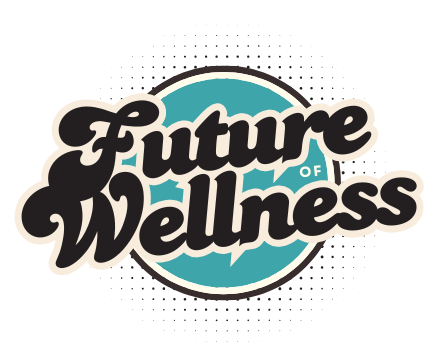It started off with all the best intentions: eat plants, save animals, heal the planet. I stocked my fridge with leafy greens, oat milk, and a colorful lineup of hummus tubs. I binged vegan recipe videos. I followed influencers who glowed like human wheatgrass shots.
But a few weeks in, I wasn’t glowing. I was groggy. My stomach was constantly bloated, my thoughts felt like they were dragging through oatmeal, and no matter how many smoothies I downed, I couldn’t shake the fatigue.
I’d gone vegan to feel better. So why did my body feel worse?
The short answer? I was doing it wrong. The longer answer is a story about labels, gut bacteria, and one too many granola bars. Here’s what I wish I’d known—and what finally helped me feel vibrant, energized, and clear again.
I mistook “vegan” for “healthy”
There’s a reason they’re not the same word.
Yes, being vegan can be incredibly healthy—but only if you’re intentional about it. In the beginning, I was just scanning ingredient labels for “milk” or “egg” and calling it a win.
That meant I was still eating a lot of processed snacks, fake meats, and refined carbs. My meals were often carb-heavy without any real balance: bagels with jam, instant noodles with soy sauce, frozen vegan pizzas.
I was avoiding animal products, sure. But I wasn’t adding anything good in their place.
What helped
I started using a simple “plant-first” test. I’d ask myself, Did this come from a plant, or from a plant pretending to be a sausage? That shifted my focus toward whole grains, legumes, nuts, seeds, and actual vegetables—not just their dehydrated, corn syrup-covered cousins.
When I started basing my meals around real, minimally processed ingredients, my body responded almost immediately. I had more energy. My skin cleared up. I even started sleeping better.
I wasn’t getting enough protein
One of the most common traps new vegans fall into—myself included—is underestimating protein. I assumed that if I was eating enough calories, I’d be fine. But protein isn’t just about building muscle—it plays a huge role in metabolism, immune health, hormone regulation, and mental clarity.
I wasn’t eating nearly enough.
Some days I’d realize I’d only had one small serving of chickpeas and maybe a handful of almonds. That’s not enough to support a healthy body, especially if you’re active.
What helped
I did a one-week meal audit. Nothing fancy—just jotting down what I ate each day and estimating the protein grams. That quick snapshot helped me see where the gaps were. I started stocking up on staples like lentils, tofu, tempeh, edamame, seitan, and soy milk.
I added hemp seeds and pumpkin seeds to just about everything—salads, oatmeal, even pasta. I also began exploring protein-forward snacks like roasted chickpeas and nut butter–stuffed dates. Once I hit about 60–70 grams of protein per day, my energy bounced back.
I forgot about B12 and iron
I was eating what I thought was a “super clean” vegan diet—leafy greens, smoothies, stir-fries galore. But I was still dragging my feet by late afternoon, barely keeping my eyes open.
That’s when I learned that B12, a crucial vitamin for brain and nervous system function, is only found naturally in animal-based foods. It has to be supplemented in a vegan diet.
Meanwhile, iron was another issue—specifically non-heme iron, which is the kind found in plants. It’s not absorbed as efficiently as the iron in meat, and low levels can cause fatigue, dizziness, and headaches.
What helped: I added a high-quality B12 supplement (methylcobalamin) and made sure to include iron-rich plant foods like lentils, blackstrap molasses, pumpkin seeds, and quinoa. Just as importantly, I paired them with vitamin C—like citrus, bell peppers, or strawberries—to boost absorption. Within two weeks, my energy lifted. The brain fog? Gone.
I overloaded on fiber too fast
When you switch from the standard American diet to plants, your fiber intake can triple overnight. That’s great in the long term—but in the short term, your gut microbiome might stage a protest.
I was eating more beans, whole grains, and raw veggies than I ever had in my life—and my digestive system was not pleased. Constant bloating. Gurgling. Cramps. I started to think I was doing something wrong or that my body just “didn’t like” being vegan.
What helped
I learned about the transition curve. Your gut needs time to adjust to higher fiber intake. I started soaking my legumes overnight, cooking them thoroughly, and easing up on raw cruciferous veggies like broccoli and kale.
I focused on gentle digestion—things like soups, stews, and sautéed greens. I also drank way more water (a must when increasing fiber) and added a spoonful of ground flaxseed daily to help things move along.
I relied on caffeine instead of real fuel
It was a subtle cycle: I’d eat a low-protein, high-carb breakfast (think fruit smoothie or toast), feel hungry again by 10 a.m., and reach for more coffee. The crash would hit by 2 p.m., followed by another oat milk latte.
Caffeine was a bandaid. My meals weren’t satisfying me because they lacked staying power—no fat, no protein, and not enough volume.
What helped
I went back to basics. Every meal needed to include three things: protein, fiber, and healthy fat. Breakfast became overnight oats with chia seeds, almond butter, and berries. Lunch was a big bowl with brown rice, roasted tofu, avocado, and tahini drizzle.
The difference was immediate: fewer energy crashes, more focus, and no afternoon caffeine cravings.
I got lost in social media wellness trends
Instagram made veganism look like art—everything neatly arranged, raw, and photogenic. But the reality was, I was copying other people’s “What I eat in a day” routines without paying attention to what I actually needed.
I’d make tiny zucchini noodle bowls and wonder why I was starving an hour later. I’d drink green juice instead of eating a real breakfast. And I judged myself when my meals didn’t look like rainbow platters.
What helped
I stopped trying to mimic influencers and started listening to my body. If I was still hungry, I ate more. If I wanted a warm grain bowl over a raw salad, I made it. I realized that wellness doesn’t have to be aesthetic to be nourishing. Food doesn’t need to be camera-ready to be healing.
I didn’t prep—so I panicked
One of the biggest barriers to sticking with veganism? Not having food ready when you’re hungry. It’s easy to eat plant-based when you’re stocked and inspired. It’s hard when you’re tired and it’s 8 p.m.
More than once, I stood in front of the fridge staring blankly at some carrots, a jar of tahini, and half a lemon. That’s when takeout starts calling your name.
What helped
I found my rhythm. On Sundays, I roast a big tray of seasonal vegetables, cook a pot of grains (quinoa or farro), and make a sauce or dressing. I chop fruit for snacking and soak beans overnight. Suddenly, “what’s for lunch?” became a 5-minute build-your-own bowl game instead of a stress spiral.
I expected perfection—and shamed myself for mistakes
This might have been the heaviest part of all. I thought being vegan meant never messing up. If I ate something that accidentally had honey, I’d spiral into guilt. I’d beat myself up over not being “a real vegan.”
But food isn’t a moral scorecard. Veganism isn’t a test you pass or fail. It’s a journey—and one that’s way more sustainable when approached with compassion.
What helped
I reframed success. Every plant-based choice is a win. Every misstep is a learning moment. I let go of the all-or-nothing mindset and found a rhythm that felt kind and consistent. And when I stopped shaming myself, the lifestyle became joyful—not rigid.
The bottom line?
Veganism didn’t make me tired, bloated, and foggy.
My approach did.
When I stopped obsessing over what I was avoiding and started focusing on what I was adding, everything changed. I learned to nourish—not just restrict. To prepare—not panic. To listen—not copy.
Now, I feel strong, clear, and energized. I eat food that supports my values and my health. And I finally understand this truth: being plant-based works best when you meet it halfway—with curiosity, intention, and grace.
If you’re struggling on your vegan journey, know this—it’s not a sign to quit. It’s a cue to recalibrate.
You’ve got this. And your body? It wants to thrive.









